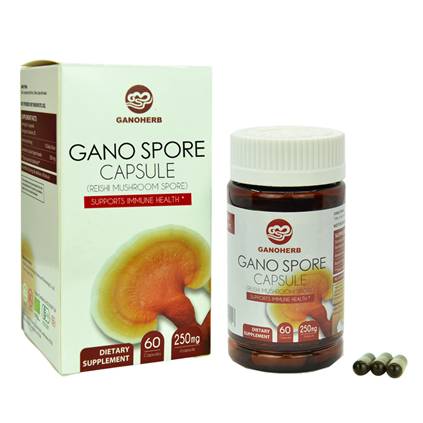Plant bacterial diseases and bactericides
Shenzhen Agricultural Technology Promotion Center Wang Wenrong
Zhejiang Longwan Chemical Co., Ltd. Xiong Xingping
First, the main symptoms of plant bacterial diseases
There are certain correlations between the symptoms of plant bacterial diseases and the pathogenic genus. For example, bacteria belonging to the genus Corynebacterium mainly cause symptoms of wilting; Pseudomonas mainly cause symptoms of leaf spot, rot and wilting; Xanthomonas mainly cause leaves Symptoms of spotting and leaf blight; Propionibacterium caused by tumors and other proliferative symptoms; Euclides generally cause soft rot, and sometimes cause wilting. In addition, most bacterial diseases in the initial stage of the disease, especially in wet natural conditions often show water or oil-like; in the saturated humidity under the lesion often bacillary pus formation, dry after becoming bacteria.
1, spot type: plant disease caused by Pseudomonas infection, a considerable number of spots. It usually occurs on leaves and shoots. The lesions on the leaves often form horny lesions with the veins as the boundary. Bacteria damage the plant's parenchyma cells and cause local acute necrosis. Bacterial lesions are initially in the form of water collapse, and when expanded to a certain extent, the necrosis of the central tissue is brownish to black, and there are often translucent fading circles of varying degrees, called halo rings. Such as cucumber bacterial angular spot.
2. Leaf blight type: Most of them are caused by infection with Xanthomonas oryzae. Plants infested eventually lead to leaf wilt. Such as cucumber bacterial leaf blight.
3, withered type: mostly caused by Corynebacterium genus, in the woody plants, Pseudomonas wilt is the most common, generally infected by Pseudomonas bacillus plant vascular bundles, blocking the transmission pathway, causing plants The stems and leaves withered or the whole plant withered, the damaged vascular tissue became brown, and under wet conditions, bacterial mucus overflowed from the section of the affected stem. Such as tomato bacterial wilt, potato blight, strawberry bacterial wilt and so on.
4, ulcer type: generally caused by Xanthomonas infestation of plants, late lesions wooded, edge uplift, the central depression was ulcerated. Such as orange canker disease, vegetable bacterial bacterial spot disease, tomato fruit bacterial spot disease.
5. Decay type: Most rot caused by infection of plants with Erwinia. Succulent tissues of plants are often infected with cells and show symptoms of decay. The bacteria produce pro-mucinase enzymes, break down the gelatinous layer of the cells, disintegrate the tissues, and flow out of the juice with a foul smell. Such as bacterial soft rot of cabbage, solanaceae and cucurbitaceous crops such as bacterial soft rot.
6, malformation: the bacteria from the tumor Microcystis can cause plant roots, neck or lateral roots and stems on the organization of excessive growth, the formation of malformations, tumorous or fibrous roots. Pseudomonas can also cause tumors. Such as chrysanthemum root cancer disease.
Second, the characteristics of the disease and identification methods
The difference between vegetable bacterial diseases and other diseases is that there are no obvious appendages (such as mycelia, mildew, hair, powder, etc.) in the lesions of vegetable plants; secondly, the fungal pus is often present in the lesions at the late stage of the disease, while the fungal diseases are Moldy (mycelium, spores, etc.). Bacterial diseases include:
1. Spotted and blighted bacterial diseases occur at the site of the disease. First, there is a watery stained translucent spot with local necrosis. When the climate is humid, there are a lot of bacteria from the stomata, water holes, lenticels and wounds of the leaves. Spilled sticky material - bacterial pus.
2. The definite diagnosis basis of the blue-and-dry and leaf-blight bacterial diseases is to cut the diseased stem with a knife and observe whether the vascular bundle in the stem section has changed and squeeze it by hand, that is, a milky viscous liquid-bacterial pus overflows on the catheter. The use of bacterial pus can be distinguished from fungal blight. Identification of bacterial wilt and blight of eggplant can be distinguished by this method.
3. The common feature of rot-type bacterial diseases is that the diseased department has soft rot, sticky slip, no residual fiber, and odor of hydrogen sulfide. The rot caused by the fungus has fiber residues and no odor. Such as the identification of cabbage soft rot and sclerotinia commonly used this method.
4, microscopic examination: bacterial diseases, except for a few (such as apple root cancer), the vast majority can be in the victim's vascular bundles or parenchyma cells produce a large number of bacteria, and after the formation of bacteria overflow, so the mirror The presence of large amounts of bacteria in the disease-detecting tissue (prevention of bacterial overflow) is a simple and easy method of diagnosing bacterial diseases. In the early stages of the bacterial disease, when typical symptoms have not yet appeared, it is necessary to check under a low magnification microscope. The method is to cut a small piece of fresh diseased tissue on a glass slide, drop water, cover with a glass slide, and lightly press it. That is, it can be seen that a large number of bacteria have emerged from the plant tissues and the cloud-like bacteria springs out. Early detection of rice bacterial blight is often used this method.
Third, common bacterial diseases on crops
(1) Cucumber: bacterial leaf spot, marginal blight, leaf blight. (2) Watermelon: Bacterial angular spot. (3) Tomato: Bacterial wilt, canker, scab, bacterial blight. (4) Pepper: Bacterial wilt, scab, soft rot, and bacterial leaf spot. (5) Cabbage: Chinese cabbage soft rot, black rot, Chinese cabbage bacterial leaf spot, and leaf spot. (6) Cabbage: Cabbage soft rot, black rot, and bacterial black spot. (7) Potato: Bacterial wilt, ring rot, soft rot. (8) Kidney beans: Bacterial diseases and halo disease. (9) Eggplant: Bacterial wilt. (10) Citrus: Canker disease. (11) Peach: bacterial perforation. (12) Fruit trees: Root cancer.
Fourth, the incidence of bacterial diseases
Bacterial diseases are diseases caused by bacterial infections, such as soft rot, ulcer disease, and bacterial wilt. The bacteria that invade the plant are rod-shaped bacteria. Most of them have one or more flagella that can invade through natural orifices (stomata, lenticels, water holes, etc.) and wounds. After invasion, host cells or tissues are usually killed first. Nutrients are further extracted from the dead cells or tissues for further expansion. In the field, pathogenic bacteria are transmitted by running water, rain, insects, etc. Because storms can greatly increase the wound of the host, it is beneficial to the intrusion of bacteria, promote the spread of diseases, and create an environment conducive to the development of diseases, which is often an important condition for the epidemic of bacterial diseases. The pathogenic bacteria live in the diseased body, seed and soil for winter, and it is easy to attack under high temperature and high humidity conditions.
V. Introduction of the main bactericides in the market
1, copper bactericide, bactericidal spectrum wide. Copper preparations are divided into organic copper and inorganic copper preparations.
Organic copper: Thiobacillus copper, English name is Thiodiazole-copper, trade name is "Longkei", Zhejiang Longwan Chemical Co., Ltd. exclusive production, with the dual role of endotracheal treatment and protection and prevention, is a thiazole organic copper kill Bacterial preparations.
Other organic copper preparations are:
Amber fatty acid copper, also known as copper dibasic acid, DT; network ammonia copper, also known as copper ammonia glue; copper acid rosin, also known as green copper milk, green mycelium, copper handsome; copper bacteria, trade name King Lake; Copper quinoline, trade name for sea shrimp, green will be; nitro humic acid copper: also known as bacteria will be grams; there are Thienson copper and so on.
Inorganic copper preparations are also good bactericides. Copper hydroxide, the product name can be killed, Feng Huan, Guanyu copper, Rui Pu; copper oxychloride, also known as Wang copper, a good treasure of copper; cuprous oxide, also known as copper master.
2. Agricultural Antibiotics: Streptomycin Sulfate for Agriculture; Coprotinin for Clorox; Hydromycin, also known as Oxytetracycline Hydrochloride, under the trade name Drybine; Ningnanmycin; Jinggangmycin, kasugamycin, gold nuclein, neomycin, polyoxin, "agricultural resistance 120" and so on. Agricultural antibiotics are generally chemically stable, highly effective, and have a therapeutic effect of internal absorption. However, the control subjects are narrow. Except for ginomycin, other antibiotics are susceptible to drug resistance.
3, Chlorobromoisocyanuric acid, trade name has a sterilizing agent, sterilization into, sterilization king, is bromobromoisocyanuric acid and bromine chloride condensation, adding active additives, dispersants and other processing. The pH value is near-neutral, and it is an efficient, broad-spectrum, low-toxicity, high biological activity, and no pollution bactericide. It is effective for bacteria, fungi and viruses. Chlorobromoisocyanuric acid is stable and can be sprayed on crops to release HOCl (hypochlorous acid), which has a strong bactericidal and viral effect.
4, trichloroisocyanuric acid, also known as strong chlorine fine; is currently an internationally promoted a high efficiency, low toxicity, broad-spectrum, rapid sterilization disinfectant, can effectively kill a variety of bacteria and fungi.
5. Thioprene: Also known as methamphetamine, the trade names include Ye Qingshuang and Ye Kuning. Zhejiang Longwan Chemical Co., Ltd. is the largest manufacturer in China and absorbs therapeutical fungicides. It is mainly used for the control of bacterial diseases in plants. Bacterial leaf blight and bacterial base rot disease, citrus canker disease, cabbage soft rot, tomato bacterial wilt. It has strong internal conductivity, therapeutic and preventive effects, long effective period, stable drug effect, no harm to crops, and safety to humans and animals.
6. Polymyxa Bacillus, whose trade name is Kangdi Leide, 1% granules; is a highly effective biological pesticide for controlling bacterial wilt and blight.
7. In addition, there are other bactericides, such as iodine, bacteriophage, thiazole, thiabendazole, and other related compounded products. (Technical Advisory Telephone Xiong Xingping)
Ganoderma Capsule (Reishi Capsule/Lingzhi capsule) is made of USDA certified organic Ganoderma Lucidum spore powder. The Ganoderma used for this product is 100% organic and comes from our self-built Ganoderma farm, which has acquired 4 organic certificates from China, Japan, the US and the EU. During the cultivation process, not any pesticide, herbicide, or chemical fertilizer was used at all. The capsule shell we used is called Vcap vegetable capsule shell which is made of 100% plant fiber and is more stable and safer compared to regular gelatin capsule. GANOHERB guarantees that all of our product do not contain any additive, hormone, or chemically synthesized matter.

The Ganoderma spore powder inside the capsule is rich in Ganoderma Lucidum polysaccharides and triterpenes, which help enhance overall immunity, preventing diseases and infections. In order to make the nutrients inside can be easily absorbed by human body and prevent oxidation at the same time, we use a patented technology called low temperature physical shell-breaking technology to break the cell wall of the spore powder. The wall-broken rate can reach as high as 99.5%.

Ganoderma Capsule
Ganoderma Capsule,Reishi Capsule,Reishi Mushroom Capsule,Ganoderma Lucidum Capsule,Herbal Capsule,Lingzhi Capsule
Ganoherb International Inc. , http://www.ganoherb.us